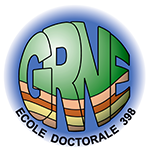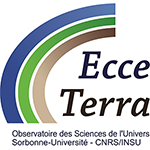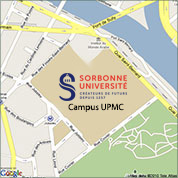Séminaire ISTeP - Olivier Namur
(Leibniz Universität, Hannovre)
Crystal mush processes in a gabbroic layered intrusion, Skaergaard, Greenland
Crystal mushes form at the boundary layers of all magma bodies, from lava flows to volcanic conduits to batholiths. The physical behaviour of a crystal mush is important in controlling a number of physical processes, from the origin of crystal-poor rhyolites, and the migration and ascent of granitic magmas, to compaction and differentiation processes in large mafic bodies. As well as strain-rate, the grain-scale microstructure of the mush is an important factor in controlling its physical behaviour, with porosity (amount of residual liquid) being particularly important. One might therefore expect to see a range of different behaviours during the crystallization of a magma body, depending on the porosity and strain rate at any given point in the crystallization history.
We use the Skaergaard layered intrusion as an example to get constraints on the crystallization processes within a gabbroic crystal mush. Based on a detailed analyses of mineral compositions at the roof, floor and walls of the magma chamber, we show how the saturation of new phases in the mush liquid as well as the porosity (amount of liquid) in the mush control the thermal regime (cooling) of the crystal mush. We then discuss how changing the cooling influences diffusion and convection into the mush liquid, and ultimately controls the zoning patterns of the crystals. We also present evidences indicating that when the mush is mechanically coherent but still permeable, contraction driven by solidification created a pressure gradient sucking interstitial liquid laterally towards the intrusion margins. Positive feedback during melt infiltration, caused by reaction between the liquid and solid phases, resulted in cuspate or fingered reaction fronts, now observed as the colloform banding originally ascribed to the action of convection cells.
07/02/2014 à 12h30, Salle Fourcade (Tour 55-56, 4ème étage)
Egalement dans la rubrique
Chiffres clés (Mars 2025)
L'ISTeP comprend 131 membres dont :
Permanents (66)
- Professeurs : 17 (+2 PAST)
- Maîtres de conférence : 26
- Directeurs de recherche CNRS : 1
- Chargés de recherche CNRS : 1
- ITA : 19
Personnels non permanents (65)
- Collaborateurs bénévoles / émérites : 17
- Chaire de professeur junior : 1
- Enseignants-chercheurs contractuel : 2
- 1 MCF accueil en délégation
- ATER et Post-Docs : 9
- Doctorants : 32
- ITA-BIATSS : 3





